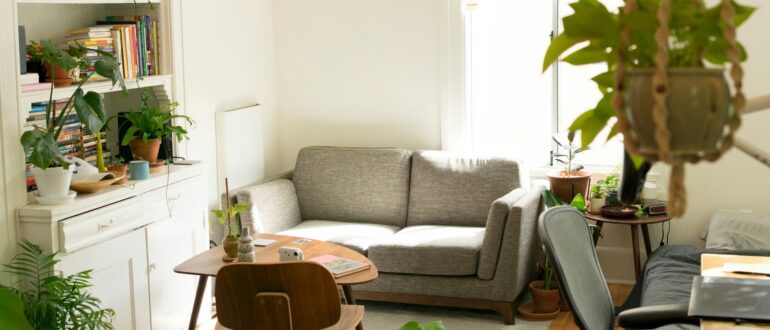Understanding Renovation Costs in Dubai
Apartment renovation in Dubai can significantly vary based on several factors that homeowners should consider when planning their projects. Broadly speaking, the expenses typically associated with renovations include materials, labor, and design fees. In this vibrant city, the average cost per square foot for a renovation can range widely, influenced by factors such as the scope of work and the quality of materials selected.
When it comes to materials, homeowners can choose from standard options or high-end luxury finishes. The choice between these significantly impacts the overall budget. For example, opting for premium materials like marble or specialized fixtures will considerably elevate costs compared to more conventional choices. Likewise, the selection of colors, textures, and styles further affects the spending, particularly in a market like Dubai, where aesthetics play a crucial role.
Labor costs in Dubai also vary based on skill level and scope of the project. Hiring experienced contractors and skilled laborers, particularly those specializing in high-end finishes or intricate designs, can lead to higher expenses, but these costs often yield superior results. It’s essential for homeowners to vet contractors thoroughly, weighing their expertise against the associated costs to find optimal value.
Design fees represent another significant aspect of renovation costs. Engaging a professional designer can enhance the outcome but may require additional budgeting. Depending on the complexity of the design, these fees can vary, further complicating the financial landscape. Additionally, factors such as market demand, time of year, and specific location within Dubai can substantially influence pricing dynamics.
Recognizing these variables allows homeowners to set realistic expectations for their renovation budget while navigating the often fluctuating landscape of Dubai’s renovation market.
Creating a Comprehensive Renovation Budget
Establishing a detailed renovation budget is a crucial step when embarking on an apartment renovation in Dubai. A well-structured budget helps homeowners understand the financial implications of their project and ensures that funds are allocated effectively throughout the renovation process. The first step in creating this budget involves itemizing expenses. List all potential costs associated with the renovation, including materials, labor, permits, and any specific design features that are desired.
Once all expenses are identified, it is essential to prioritize renovation needs. Distinguish between must-haves and nice-to-haves—this prioritization will guide your spending and help manage financial resources more efficiently. For example, if a full kitchen renovation is planned, focusing first on structural changes, such as plumbing and electrical work, ensures that necessary upgrades are not overlooked in favor of aesthetic touches.
In addition to itemizing and prioritizing, it is vital to factor in potential unexpected costs. Renovations often reveal issues that require immediate attention, from hidden water damage to outdated wiring. As a safeguard, allocate a contingency fund, typically around 10-20% of the total budget, to cover these unforeseen expenses. This approach not only offers peace of mind but also prevents financial strain throughout the project.
Researching prices is also an integral part of creating a comprehensive budget. Homeowners should gather quotes from multiple contractors, as prices can vary significantly for similar services. It is equally important to check supplier prices for materials. An accurate understanding of potential costs will allow for better budget alignment.
In summary, a comprehensive renovation budget, when meticulously crafted, empowers homeowners to embark on their apartment renovation project with confidence, ensuring that each financial aspect is thoughtfully considered and managed.
Exploring Financing Options for Renovation Projects
When considering apartment renovations in Dubai, understanding the various financing options available is essential for homeowners looking to maximize their investment. The financial landscape offers several alternatives, each with distinct features and benefits. Traditional loans, such as personal loans or home improvement loans, are commonly sought for renovation projects. These loans typically involve fixed or variable interest rates and repayment terms, allowing for structured financing over a set period. It is crucial for homeowners to assess their current financial situation and determine how much they can responsibly borrow, as this will directly influence the scope of their renovation plans.
Another financing avenue to consider is a home equity line of credit (HELOC). This option allows homeowners to leverage the equity already accumulated in their property. By tapping into this equity, they can access funds for renovations with potentially lower interest rates compared to personal loans. Homeowners should note that a HELOC usually requires a strong credit score and a stable income, as lenders will evaluate their ability to repay the borrowed amount. Therefore, maintaining a solid financial profile is critical when pursuing this option.
In addition to traditional loans and HELOCs, various government grants or programs aimed at facilitating home improvements can be explored. These initiatives can provide financial support to eligible homeowners, particularly those undertaking energy-efficient upgrades or structural enhancements. Researching available grants through local government websites or outreach initiatives can help determine what programs might apply. Lastly, when approaching banks or lenders for financing, it is advisable to prepare a comprehensive renovation plan along with a well-organized financial profile. This preparation increases the likelihood of securing funding and ensures the homeowner is equipped for a successful renovation journey.




Comments 0